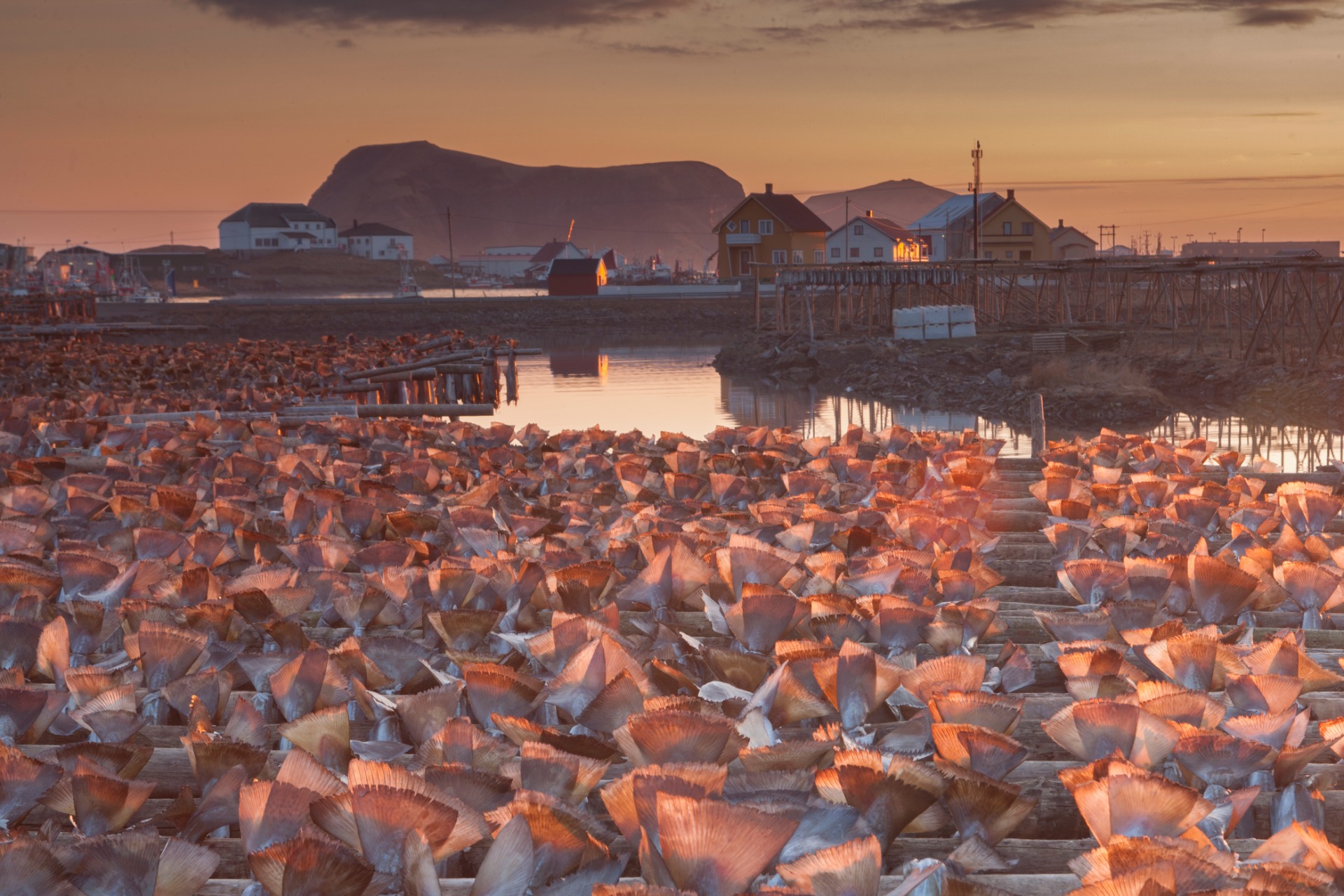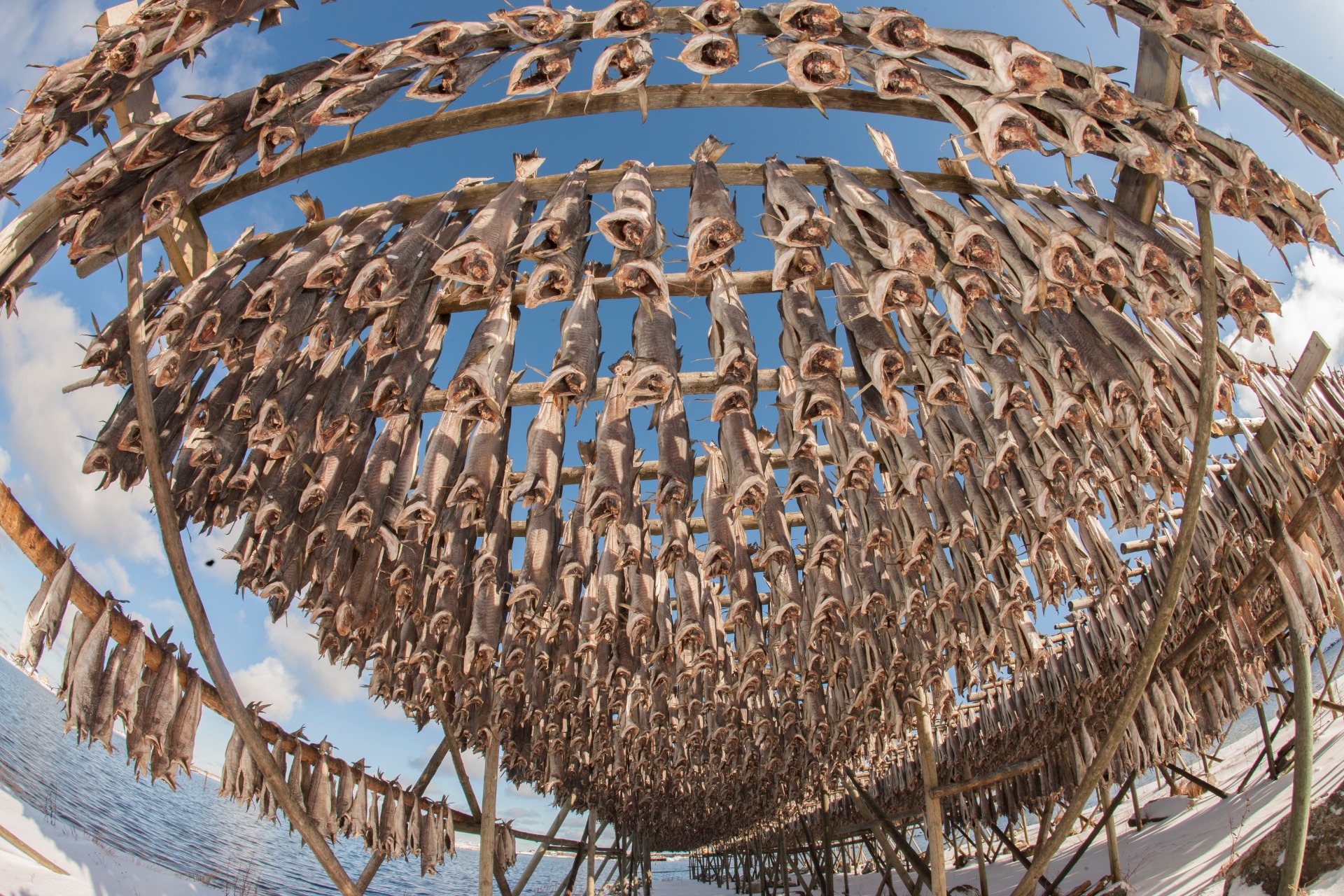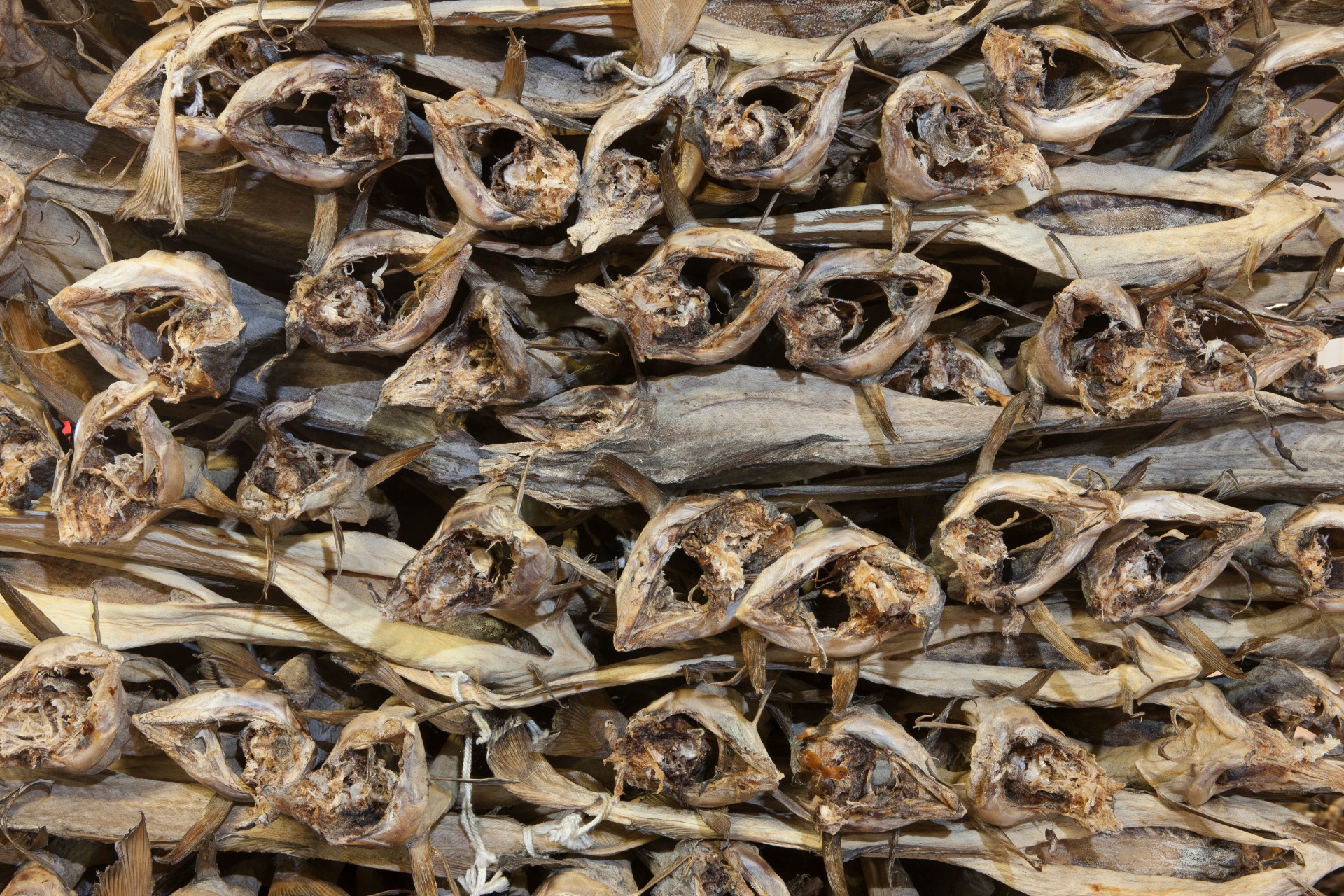STOCKFISH
Our existence
Every year, the cod moves from the Barents Sea to get ready for mating, and the mating-ready cod is perfect for the production of stockfish. Fished right outside the living room door, gutted, barred and hung on racks for three to four months - natural and short-distance food!
From the sea to the dish
Out on the fishing field, fishing takes place in the traditional way, with either nets, juksa, line or spinning rods. At Røst, the boats have a short way to the fishing field, which is crucial to ensure the quality of the fish. This means that the nets are in the sea only a few hours from the setting of the net, until the fish is in the boat, and further that the fish is received on the quay. the same applies to the line boats, the juksa boats and the spinnakers. It is important to us that the fish is as fresh as possible the moment it is bought over the quay.
For us, it is important that the fish undergoes the least possible load the moment it is hoisted up from the boats. That is why we have installed water tanks and conveyor belts through the production facilities. Previously, it was common to empty the fish in tubs, then in tanks and back in tubs after gutting. This caused the fish to undergo a lot of "strokes", and there was minor damage to the fish. With tanks filled with running water and conveyor belts that take the fish from A to B, we say that the fish flows through our facility.
The fish is also weighed up to twice with the help of automatic batch weights, both in round condition and in gutted condition. This gives us the opportunity to "monitor" the fish every single day, and we then get an indication of how much is inside the fish - liver, roe, stomach contents and so on.
Once the fish is gutted, it goes directly to the "sperre"-production, or other uses. When the fish is being "sperret", it means that two and two fish of equal size are tied together with a locking band. Fish of equal length and weight means that it hangs stably on racks.
The fish is then transported out in a tank to the racks, and hung by hand. Hanging fish is a quality work, where the fish must hang the right way in relation to sun and wind, with the right distance. Out in nature, it is a lot up to the coincidences in the weather, but we do our part to ensure that the quality is the best possible.
The cod hangs on racks from February / March to June. Here it hangs in all kinds of weather and wind, which helps to give the characteristic taste of the fish. Many people may think that the fish should preferably hang with the least possible precipitation, but this actually helps to add an extra flavor to the stockfish. And we have plenty of different weather out here in the ocean gap. At Røst, the temperature is also very stable, with little heat and little cold - and few or no days below 0 degrees Celsius. Then the cod thrives very well!
In June, the work of harvesting the stockfish begins. This is done in the traditional way, where the rope is cut with a knife and the stockfish is placed in either tubs or boxes, or directly on a pallet. The fish must be put on a pallet and placed in rooms with good ventilation. Here the fish is "dried" for about a month.
A finished dried fish normally contains between 14 and 16 percent water.
Then comes the sorting of the fish. This is craftsmanship of the highest class where every single fish is reviewed to check the quality. The fish is sorted by length, weight, appearance, smell and many more factors around quality.
For our part, the fish is packed in boxes, or pressed in bundles, for further sale. Most of our fish goes to Italy, with some exports to the USA, Canada and Africa.
Protected geographical indication
The combination of excellent raw material, very special drought conditions and long traditions has meant that Stockfish from Lofoten has been given a Protected Geographical Indication. It is a legal protection that protects stockfish from imitations and cheating, and ensures the consumer real goods. In other countries, a number of shortcuts are taken, and fish are dried inside industrialized facilities.
The protected designation guarantees that Stockfish from Lofoten is made as it has always been made. The fish is allowed to hang out on open racks in weather and wind, until the sound reveals whether it is dry enough. Because just like with parmesan, it is the sound you get when you tap the product that determines whether it is finished. Then it is taken in and dried, so that the taste matures. During the drying process, a fermentation process takes place which makes the fish stuffed with umami, the fifth flavor.
https://www.matmerk.no/no/beskyttedebetegnelser/aktuelt/toerrfisk-fra-lofoten
Sorting of stockfish
It can not be said enough, so we mention it again. The whole process, from the fish being picked up by the boats until it is packed in finished boxes, is the alpha omega of getting a good stockfish. It is important that the fish get enough rinsing from the time it is picked up until it is "sperret" and made ready for the racks. Nevertheless, it is important that the fish is not stored in water for a long time. Then the fish slime, or "slip" as we say, will be washed away. The fish mucus in the skin of cod helps to protect the fish from microorganisms after it has been hung.
Inspection of the fish hanging on racks can also be crucial for further quality. Here you will discover any remnants of offal from fish, which often hangs out of the neck.
Common to all stockfish is that size, appearance and a number of other qualitative characteristics determine the quality of the product. We mainly sort our fish into two main sorts: Prima fish and Sekunda fish.
The prima fish is the best fish. This fish should be virtually flawless, depending on which "subcategory" it is to be sorted into. The second fish may have small but not significant defects.
Prima Sorting
Quality criteria

RAGNO
This is considered the best quality. The fish should be of the leanest kind, flawless, fine and over 60 cm.

Westre Magro - WM
A thin and lean fish with no hint of fullness, with color. This is available in three sizes - 60/80 cm, 50/60 cm and 40/50 cm.

Grand Premier - GP
This is a special variety of stockfish that must have color. It can be characterized as a slim Bremer.

LUB
In this type of stockfish, minor errors can be accepted. The weight should be from 1.1 kg and up.

Bremer - BR
Here we have a rich stockfish of very high quality. The size is between 1 kg and 1.3 kg.

Hollender - HO
This is also a rich stockfish without major defects. The weight should be between 0.8 kg and 0.9 kg.

Westre Ancona - WA
This is fish of the same type and quality as WM, but a little too full-bodied to go as WM, and here minor mistakes can be accepted. The weight is between 0.6 kg and 0.7 kg.

Westre Piccolo - WP
This fish must have a color, and weighs between 0.4 and 0.5 kg.

Italia Grande - IG
This fish does not quite reach a HO, when it comes to appearance. The fish should weigh between 0.8 and 0.9 kg.

Italia Medio - IM
This is also a bit like IG, but a bit smaller - between 0.6 and 0.7 kg
Characteristics of prima fish
- Natural shape and open belly
- Clean in neck and abdomen
- Without a hint of slip formation
- Without hanging stains
- Without frost damage
- Without soil layer
Sekunda Sorting
Quality criteria

IG/B
This fish does not quite reach an IG, when it comes to appearance. The fish should weigh between 0.8 and 0.9 kg.

IM/B
This is also a bit like an IM, but a bit smaller - between 0.6 and 0.7 kg.

LUB/B
This is like LUB, but can be a bit bigger and have some small flaws when it comes to quality.

TIPO C
This is the supposedly worst stockfish, which contains major quality defects.
Characteristics of sekunda fish
- May have some coating in the abdominal area
- May have partially closed abdomen
- May be somewhat frosty, but not so much that you can not see the fresh meat at the backbone
- May contain some blood or blood stains
- Some soil layer is accepted
- Do not have bumps, tears or liver residue





